Magnesium is a mighty mineral that helps your body in over 300 different ways. It keeps your heart beating normally, your bones strong, and your nerves working properly. Many of us don’t get enough of this important nutrient in our daily meals, but luckily there are plenty of tasty foods that can boost your magnesium levels naturally.
1. Almonds: The Portable Powerhouse
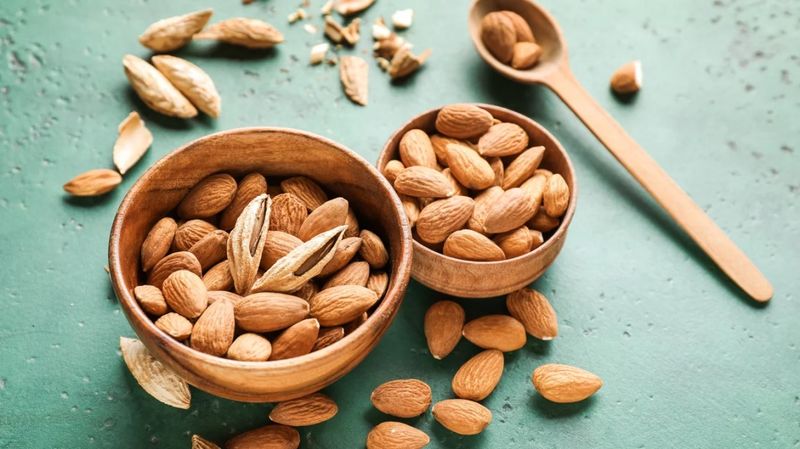
Almonds deliver an impressive 80 mg of magnesium in just a single ounce (about 23 nuts). These crunchy treats are perfect for on-the-go snacking or adding to your morning oatmeal for an extra nutrition boost.
Unlike many snacks, almonds provide lasting energy without causing sugar spikes. They’re loaded with healthy fats that keep you feeling full longer, making them perfect for mid-afternoon hunger pangs.
Try roasting almonds with a little sea salt or cinnamon for a flavor upgrade. Store them in small containers for easy portion control – a handful provides nearly 20% of your daily magnesium needs!
2. Spinach: Popeye’s Secret Weapon
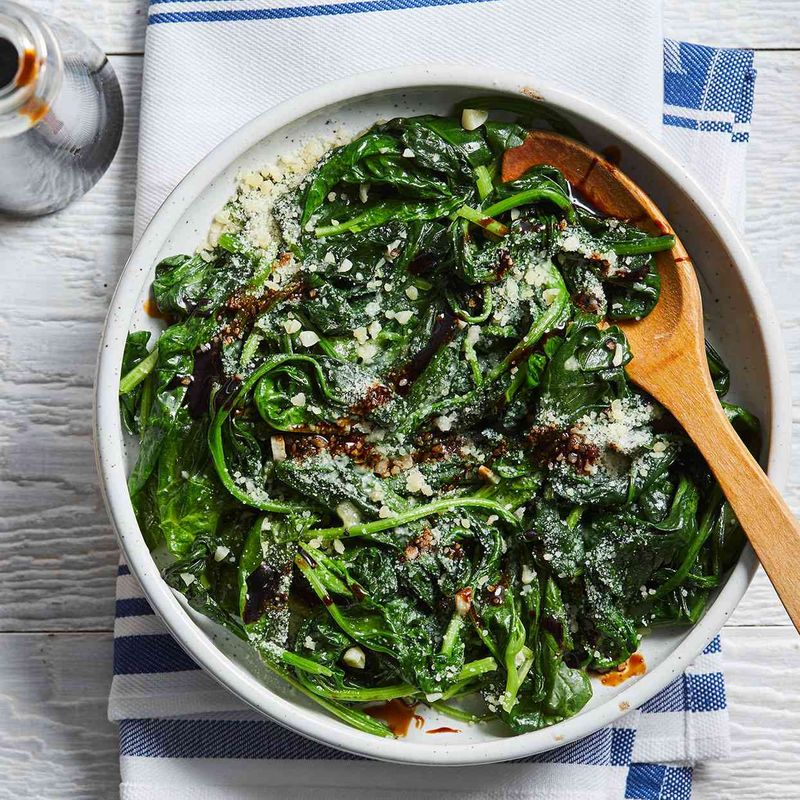
A cup of cooked spinach provides a whopping 157 mg of magnesium, making it one of the richest plant sources available. This leafy green superhero shrinks considerably when cooked, making it easier to consume more in a single serving.
Fresh spinach can be added to smoothies without altering the taste significantly. When sautéed with a bit of garlic and olive oil, it becomes a delicious side dish that pairs with almost any meal.
Frozen spinach works just as well as fresh for most recipes and stays good much longer. Try adding it to soups, pasta sauces, or casseroles for an easy magnesium boost that even picky eaters might not notice!
3. Dark Chocolate: The Sweet Surprise
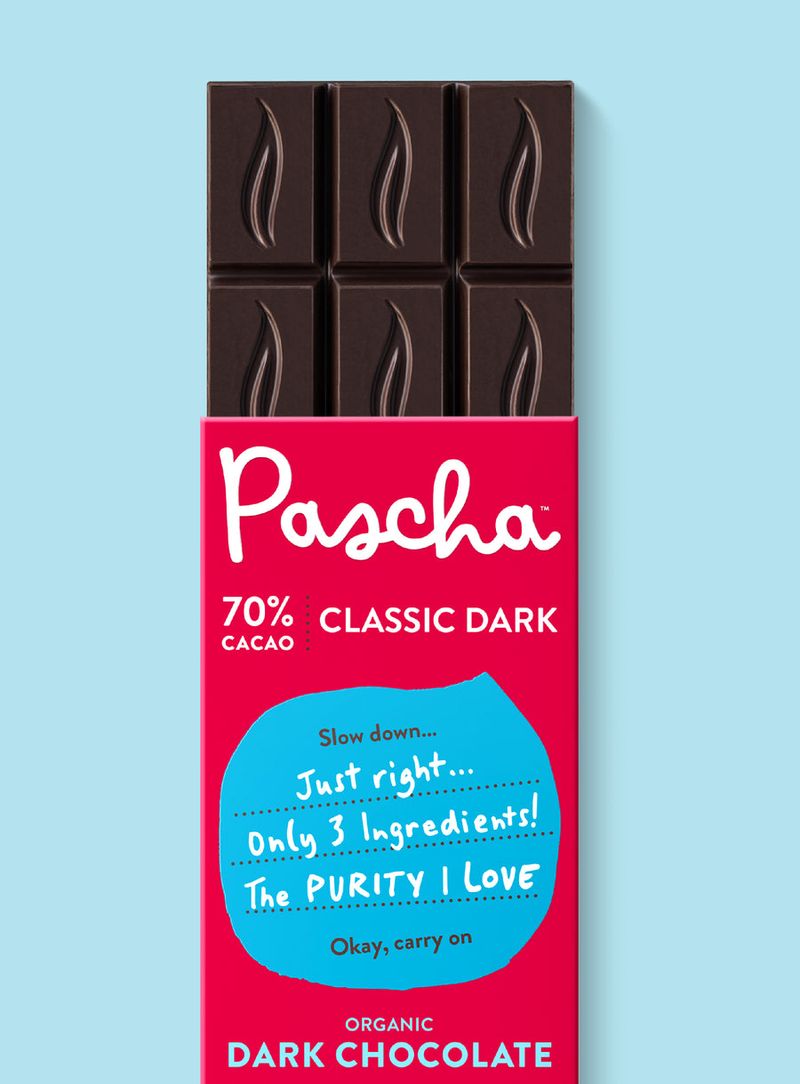
Dark chocolate with 70-85% cacao contains about 64 mg of magnesium per ounce, making it a delicious way to boost your intake. The higher the cacao percentage, the more magnesium and other beneficial compounds you’ll get.
Beyond magnesium, dark chocolate contains antioxidants called flavanols that support heart health. Many people find that a small square of dark chocolate after dinner satisfies sweet cravings while providing actual nutritional benefits.
Look for chocolate with minimal added sugar and ingredients. Store it away from strong odors as chocolate can absorb nearby scents. A small daily portion can be part of a healthy diet – aim for one ounce or less to keep calories in check.
4. Pumpkin Seeds: Tiny Treasures
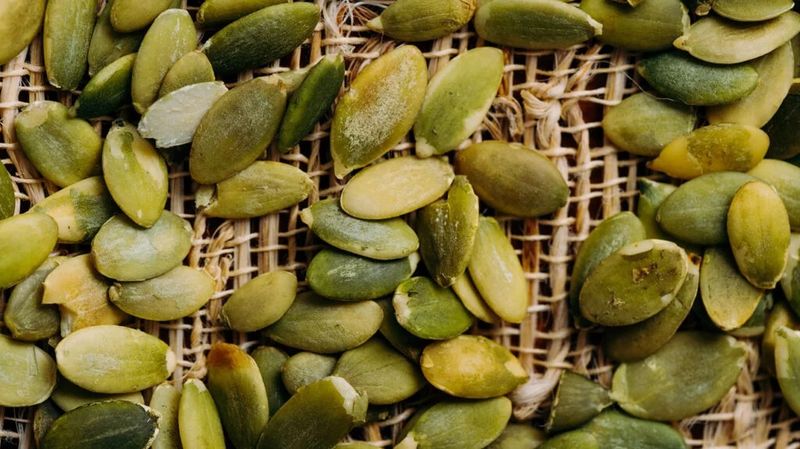
Pumpkin seeds (pepitas) pack an incredible 150 mg of magnesium per ounce, making them magnesium champions in the seed world. Their distinctive green color and nutty flavor make them a versatile addition to many dishes.
Sprinkle these seeds on salads for a satisfying crunch or add them to homemade granola and trail mixes. They can be roasted with various seasonings – try cinnamon and a touch of maple syrup for a sweet version, or paprika and sea salt for a savory snack.
Many cultures have valued pumpkin seeds for centuries. In addition to magnesium, they provide zinc and plant-based omega-3 fats. Keep them refrigerated to prevent their healthy oils from going rancid.
5. Avocados: Creamy Magnesium Machines
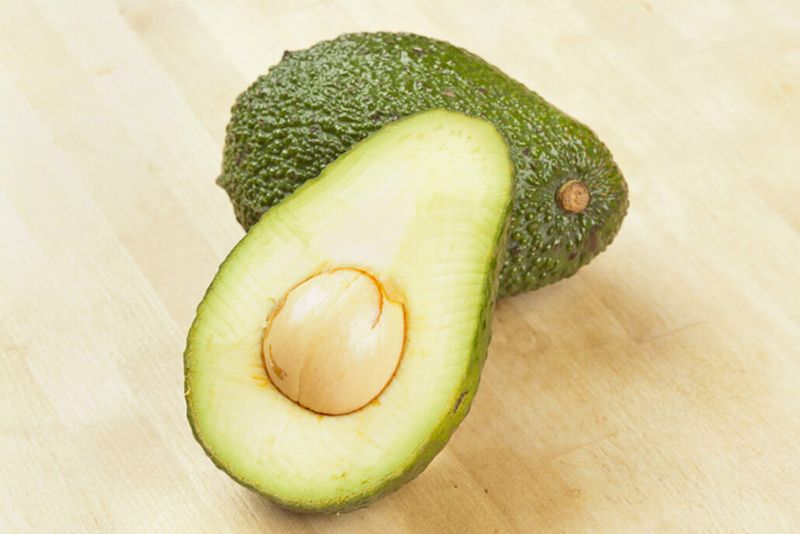
A medium avocado delivers about 58 mg of magnesium wrapped in a package of creamy, satisfying healthy fats. This versatile fruit (yes, it’s technically a fruit!) works in both sweet and savory dishes.
Avocados contain nearly 20 different vitamins and minerals beyond magnesium. Their high fat content actually helps your body absorb certain nutrients from other foods eaten alongside them. Mash them on whole grain toast for a double magnesium hit.
To pick a ripe avocado, gently press near the stem end – it should yield slightly but not feel mushy. Speed up ripening by storing in a paper bag with a banana. Once cut, sprinkle with lemon juice to prevent browning.
6. Black Beans: Magical Legumes
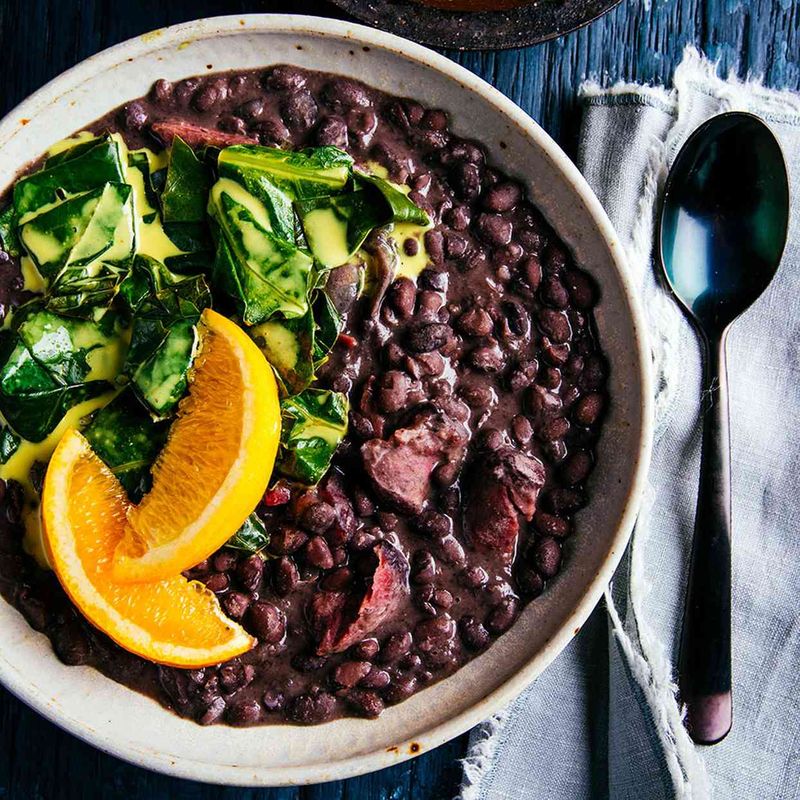
A cup of cooked black beans contains approximately 120 mg of magnesium, making them a fantastic plant-based source of this essential mineral. Their deep black color signals a high antioxidant content as well.
Black beans have a satisfying texture and mild flavor that absorbs seasonings beautifully. They’re incredibly budget-friendly, especially when purchased dried rather than canned. Soak dried beans overnight to reduce cooking time and improve digestibility.
Try black beans in burritos, soups, or mashed with garlic and spices as a side dish. They can even work in brownies and other desserts where their color and texture blend in while adding fiber and nutrients. Rinse canned beans to reduce sodium by about 40%.
7. Quinoa: The Ancient Grain Alternative
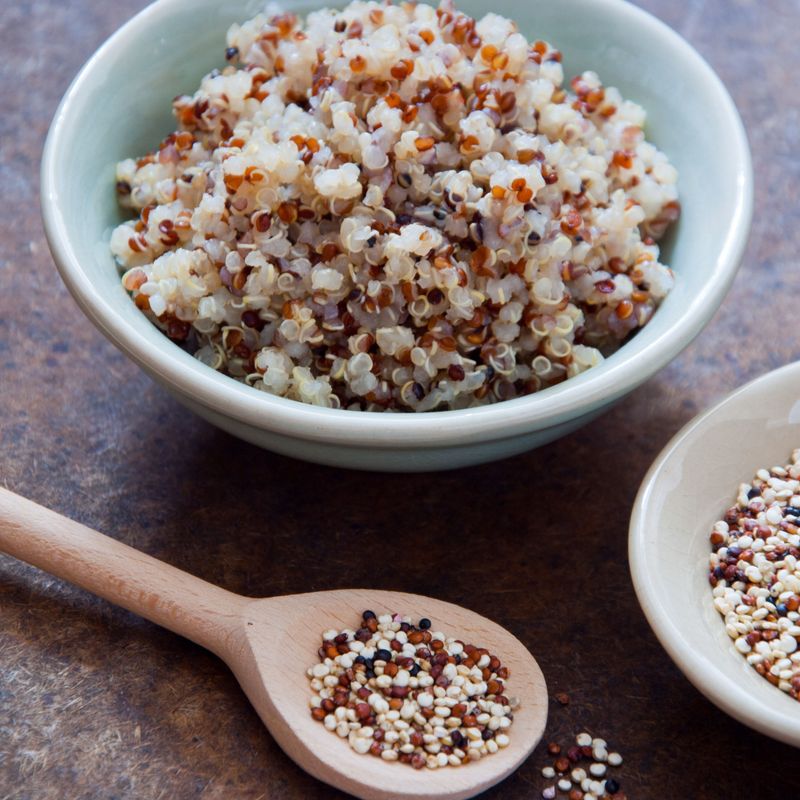
Quinoa provides about 118 mg of magnesium per cooked cup, making it one of the most magnesium-rich grain options available. Actually a seed rather than a true grain, quinoa cooks quickly and has a pleasant, slightly crunchy texture.
Unlike many plant foods, quinoa contains all nine essential amino acids, making it a complete protein source. Its mild, nutty flavor works well as a base for both savory meals and breakfast porridges. Rinse quinoa before cooking to remove its natural bitter coating called saponin.
Try cooking quinoa in vegetable or chicken broth instead of water for extra flavor. It makes excellent cold salads with vegetables and dressing, and can replace rice in most dishes for a nutritional upgrade. Leftover quinoa freezes well for quick future meals.
8. Cashews: Buttery Magnesium Morsels
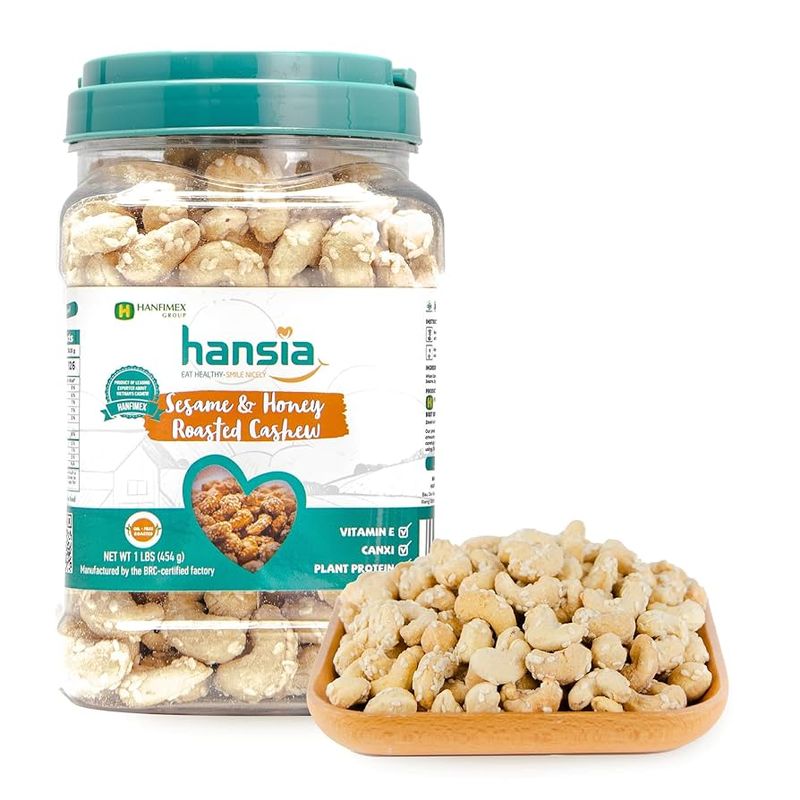
Cashews provide approximately 74 mg of magnesium per ounce, along with a naturally sweet, buttery flavor that makes them a favorite snack. Their softer texture compared to other nuts makes them perfect for creating creamy sauces and spreads.
These curved nuts are actually seeds that grow from the bottom of cashew apples. When purchasing, look for dry, uniform cashews without spots or cracks. Store them in the refrigerator to prevent their healthy oils from going rancid.
Cashews can transform into dairy-free cheese alternatives when soaked and blended. Try making cashew cream by blending soaked cashews with water – it works as a base for soups, sauces, and even desserts. Their natural sweetness pairs beautifully with both savory and sweet dishes.
9. Tofu: Versatile Plant Protein
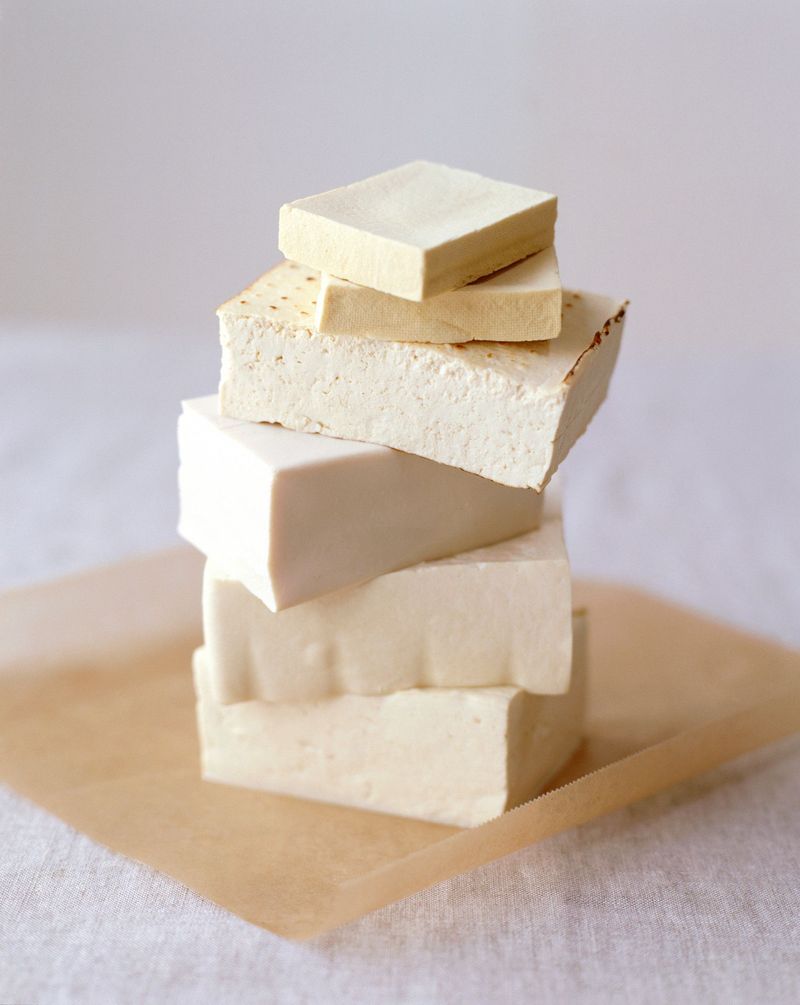
Firm tofu contains about 53 mg of magnesium per 3.5 oz (100g) serving, making it a valuable source for vegetarians and vegans. This bean curd made from soybeans takes on the flavor of whatever it’s cooked with, making it incredibly versatile.
Tofu comes in different textures – silken works well in smoothies and desserts, while firm and extra-firm varieties hold up better in stir-fries and grilling. Pressing tofu before cooking removes excess water and helps it absorb marinades better.
Try freezing tofu then thawing it for a chewier, more meat-like texture. Marinate cubes in soy sauce, garlic, and ginger before baking or air-frying for a crispy exterior. Crumbled tofu scrambled with turmeric and nutritional yeast makes a convincing egg alternative for breakfast.
10. Chia Seeds: Tiny Nutritional Giants
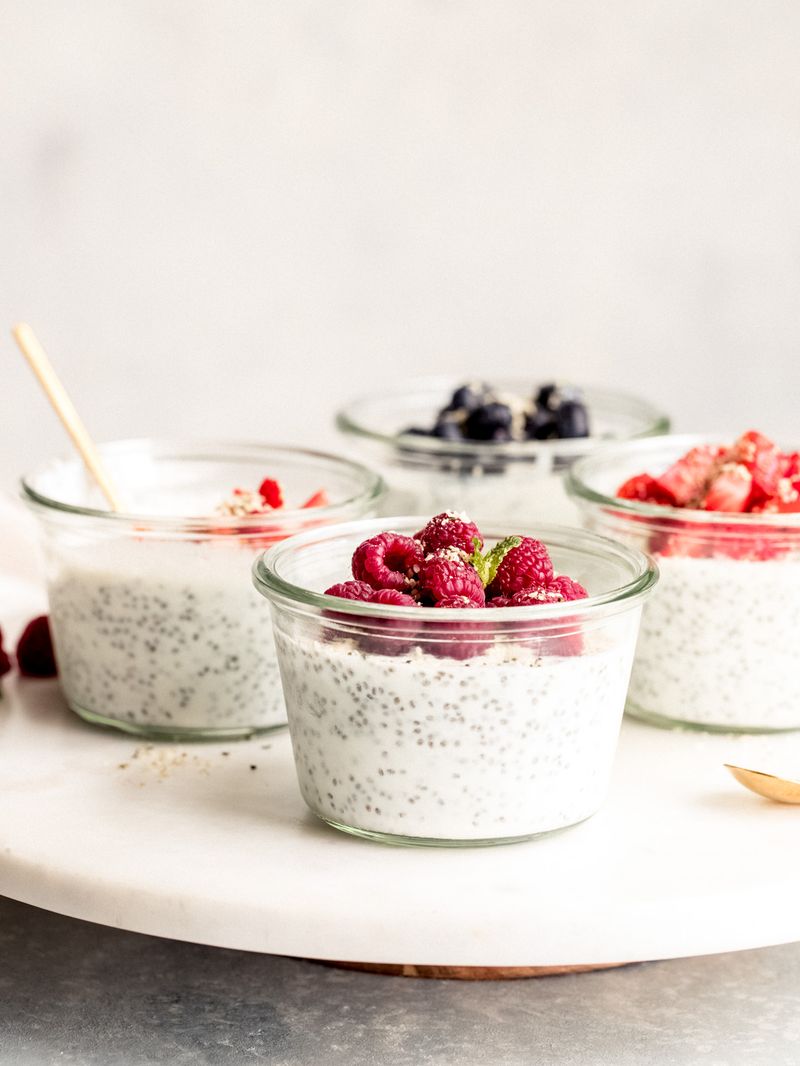
Chia seeds pack about 95 mg of magnesium in just two tablespoons, making these tiny seeds a powerful addition to your diet. When mixed with liquid, they form a gel-like consistency that works wonderfully in puddings and smoothies.
These small black or white seeds come from a plant in the mint family native to Mexico. Ancient Aztec warriors reportedly ate them for sustained energy. Beyond magnesium, chia seeds provide omega-3 fatty acids, fiber, and calcium.
No cooking required – simply sprinkle them on yogurt, oatmeal, or salads. Make basic chia pudding by mixing 2 tablespoons of seeds with ½ cup of milk (dairy or plant-based) and letting it sit overnight. Add vanilla, cinnamon, or fruit for flavor variations.
11. Brown Rice: The Whole Grain Staple
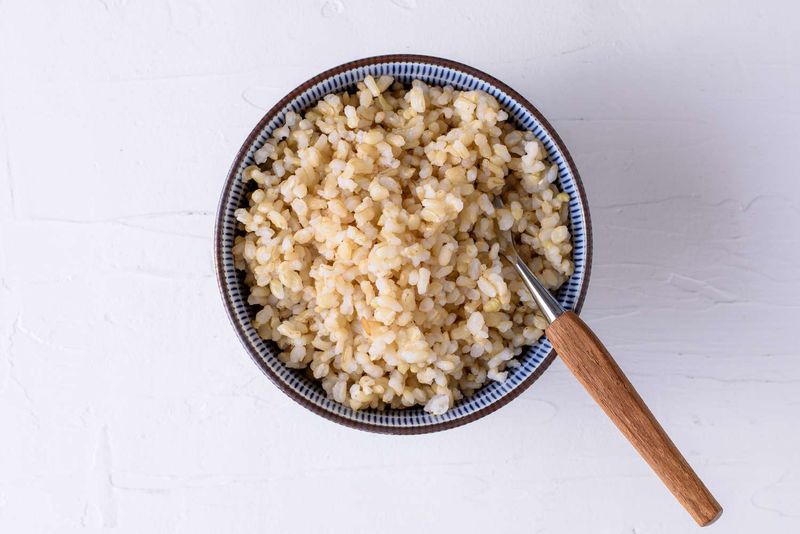
Brown rice provides about 84 mg of magnesium per cooked cup, significantly more than its white counterpart. This whole grain retains its bran and germ layers, which contain most of the nutrients stripped away in white rice processing.
The nutty flavor and chewy texture of brown rice make it satisfying as a base for many meals. It takes longer to cook than white rice (about 45 minutes), but the nutritional benefits are worth the wait. Use a rice cooker or batch cook and freeze portions for convenience.
Try brown rice in grain bowls topped with vegetables and protein, or use it in stir-fries where its texture holds up well. For a flavor boost, cook it in broth instead of water and add herbs or a bay leaf during cooking. Brown rice flour makes a nutritious gluten-free alternative in baking.
12. Bananas: Portable Magnesium Packages
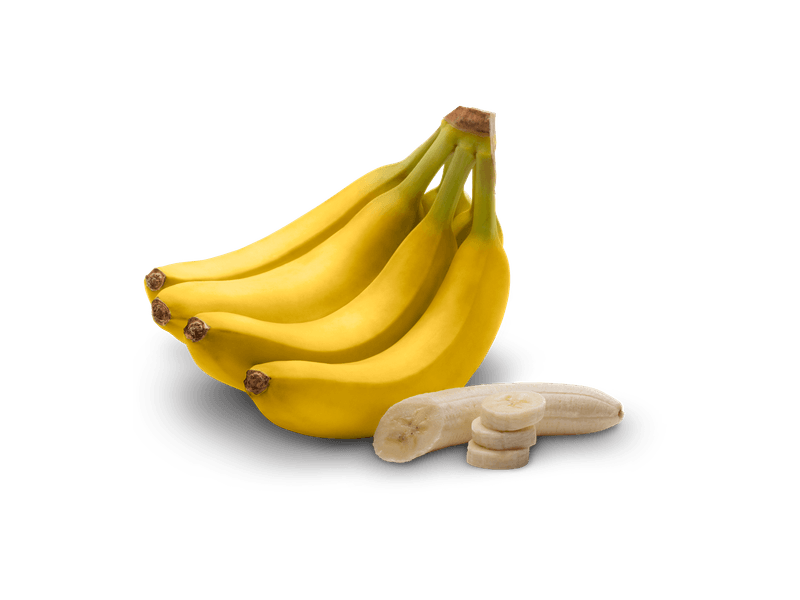
A medium banana contains about 32 mg of magnesium wrapped in nature’s perfect portable package. While not the highest magnesium food by volume, bananas are convenient, widely available, and beloved by most people, including children.
Beyond magnesium, bananas provide potassium, vitamin B6, and natural sugars that make them perfect for quick energy. The fiber content helps slow the absorption of these sugars, preventing blood sugar spikes. Green bananas contain resistant starch, which feeds beneficial gut bacteria.
Freeze ripe bananas for smoothies or nice cream (blend frozen banana chunks for a natural ice cream alternative). Add them to oatmeal or yogurt for natural sweetness. Store bananas at room temperature until ripe, then refrigerate to slow further ripening – the skin will darken but the fruit inside stays fresh longer.
13. Flaxseeds: Omega-3 Magnesium Boosters
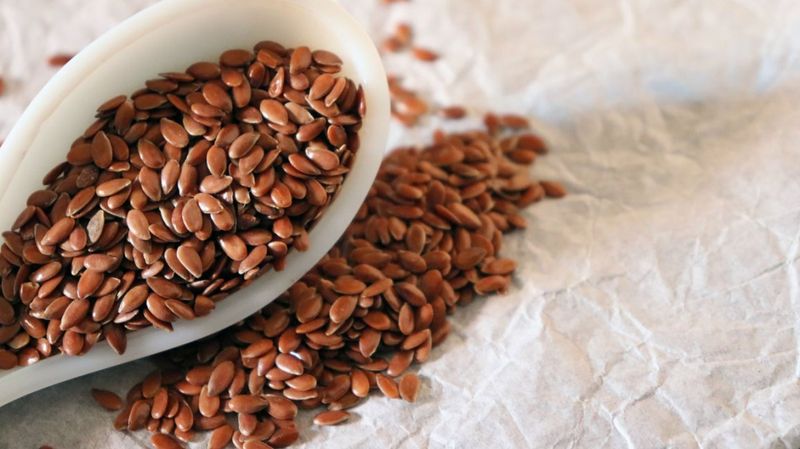
Flaxseeds provide about 111 mg of magnesium in just two tablespoons, along with an impressive amount of omega-3 fatty acids. These small brown or golden seeds have a mild, nutty flavor that works well in many dishes.
Ground flaxseeds are easier for your body to digest than whole seeds. Buy them pre-ground or grind them yourself in a coffee grinder just before using. Store ground flax in the refrigerator or freezer to prevent the oils from going rancid.
Sprinkle ground flaxseeds on cereal, yogurt, or salads. They make an excellent egg substitute in baking – mix one tablespoon of ground flax with three tablespoons of water and let sit for 5 minutes until it forms a gel. This “flax egg” works in most recipes calling for one egg.
14. Edamame: Green Soybean Pods

Edamame delivers about 99 mg of magnesium per cup of these bright green soybeans. Typically served in their pods as an appetizer at Japanese restaurants, edamame makes a protein-rich snack with a satisfying pop when you bite into them.
Young soybeans harvested before they harden, edamame has a mild, slightly sweet flavor that appeals to many palates. Find them in the freezer section, either in pods (for snacking) or shelled (for adding to recipes). They cook quickly – just 3-5 minutes in boiling water.
Add shelled edamame to salads, grain bowls, or stir-fries for a protein boost. Mash them with garlic, lemon, and herbs for a hummus-like spread. For a simple snack, steam edamame pods and sprinkle with sea salt – just squeeze the beans directly from the pod into your mouth.
15. Yogurt: Creamy Magnesium Source
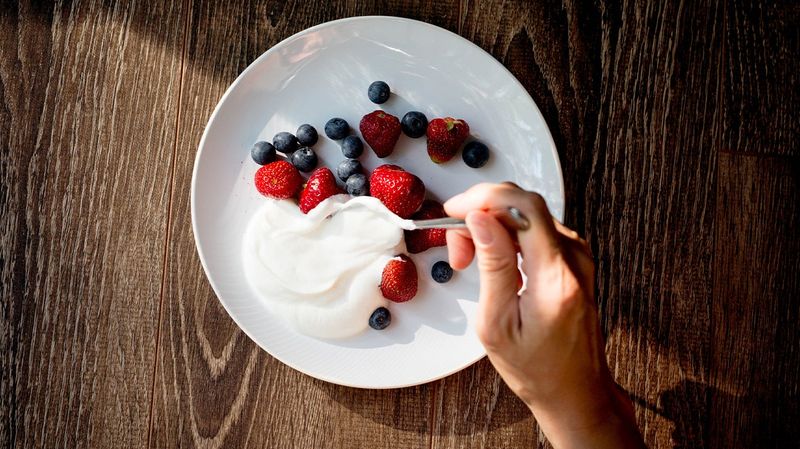
Plain, low-fat yogurt provides about 42 mg of magnesium per cup, along with calcium, protein, and beneficial probiotics. This versatile dairy product works in both sweet and savory applications, making it easy to incorporate into meals throughout the day.
Greek yogurt contains less magnesium but more protein than regular yogurt. Look for varieties without added sugars – you can add your own sweetness with fruit or a drizzle of honey if desired. The live cultures in yogurt support gut health and proper digestion.
Use yogurt as a base for breakfast parfaits with fruit and granola. It makes an excellent substitute for sour cream in dips and baked potatoes. Try using it in marinades – the lactic acid helps tenderize meat. For a refreshing drink, blend yogurt with fruit and a touch of honey to make lassi, a traditional Indian beverage.
16. Potatoes with Skin: Humble Magnesium Heroes

A medium potato with skin contains about 43 mg of magnesium, with most of this mineral concentrated in the skin. This humble vegetable is often overlooked as a nutrition source, but properly prepared potatoes provide several important nutrients.
Baking, roasting, or boiling potatoes preserves more nutrients than frying. Sweet potatoes offer similar magnesium levels with additional vitamin A. Scrub potatoes thoroughly rather than peeling them to retain the magnesium-rich skin.
Try hasselback potatoes – thinly sliced but still connected at the bottom, then roasted – for a dish that maximizes the crispy skin surface. Potato skins loaded with healthy toppings make a nutritious appetizer. Store potatoes in a cool, dark place (not the refrigerator) to prevent the starches from converting to sugars.
17. Lentils: Budget-Friendly Magnesium
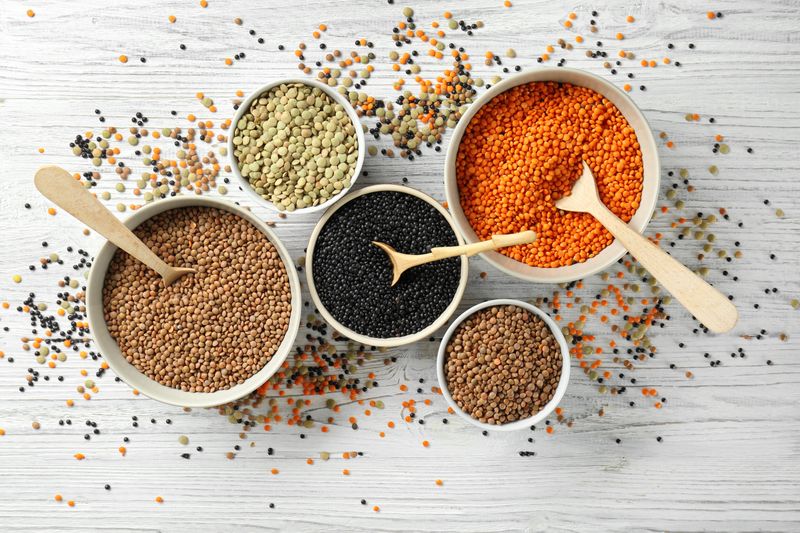
Cooked lentils provide about 71 mg of magnesium per cup, making them an economical way to boost your intake of this essential mineral. These small legumes come in several varieties – green, brown, red, yellow, and black – each with slightly different flavors and cooking times.
Red lentils cook the fastest (about 15-20 minutes) and break down easily, making them perfect for soups and purées. Green and brown lentils hold their shape better, ideal for salads and side dishes. Unlike many beans, lentils don’t require pre-soaking.
Make a simple lentil soup with carrots, onions, and spices for a warming meal. Try them as a meat substitute in tacos or bolognese sauce. Cooked and cooled lentils make excellent additions to grain bowls and salads. Sprouted lentils add crunch to sandwiches and wraps while boosting nutrient availability.
18. Oats: Morning Magnesium Boost
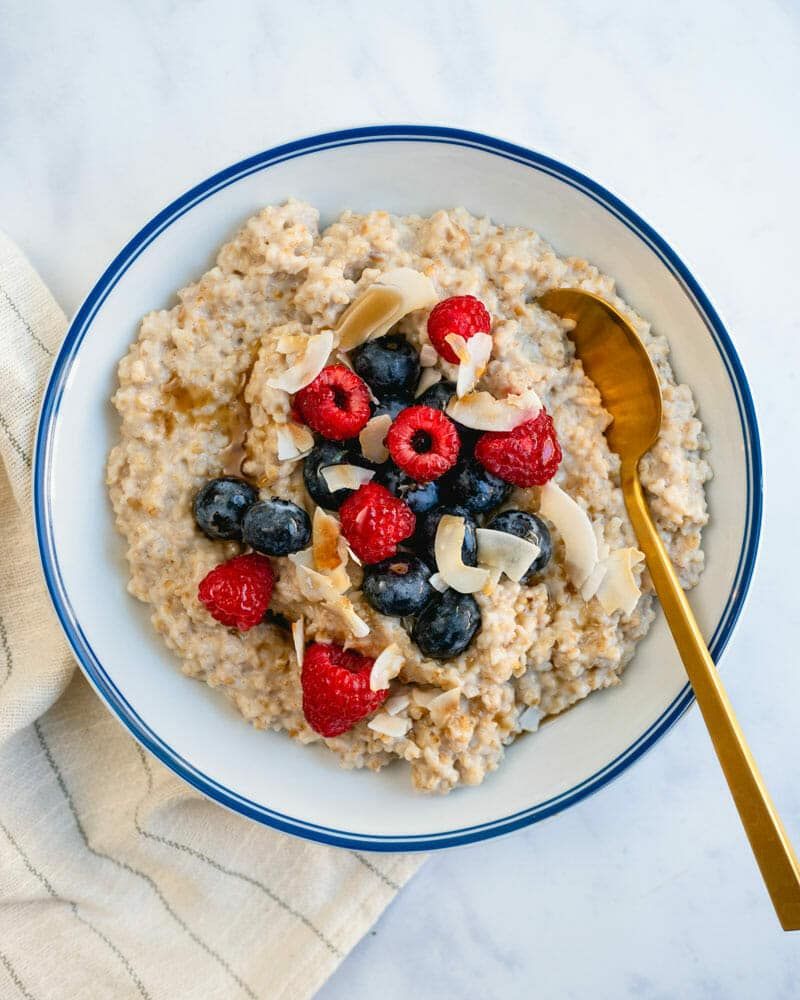
A cup of cooked oats delivers about 60 mg of magnesium, making your morning bowl a smart way to start building toward your daily magnesium goals. Steel-cut oats take longer to cook but have a chewier texture many people prefer over quick-cooking varieties.
Oats contain a special type of fiber called beta-glucan that helps lower cholesterol levels. Their mild flavor makes them incredibly versatile – they can be prepared sweet or savory with endless topping possibilities. Overnight oats (raw oats soaked in milk or yogurt) require no cooking and make a convenient grab-and-go breakfast.
Try savory oatmeal topped with a fried egg, avocado, and hot sauce for a different breakfast experience. Add oats to smoothies for extra thickness and nutrition. Ground oats can replace some flour in baking recipes for added fiber and nutrients.
19. Whole Wheat Bread: Everyday Magnesium
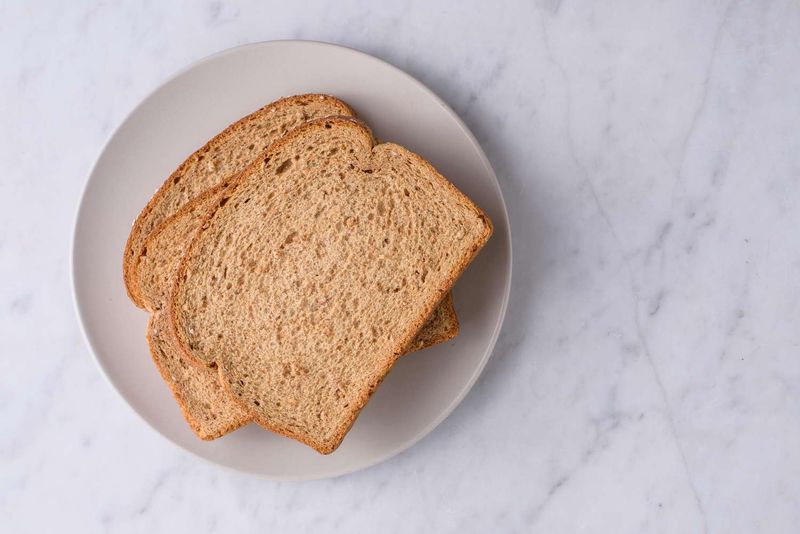
Two slices of whole wheat bread provide about 46 mg of magnesium, making your sandwich a contributor to your daily needs. Look for “100% whole wheat” on labels, as “wheat bread” might still be mostly refined flour with little nutritional value.
Real whole wheat bread has a denser texture and nuttier flavor than white bread. Check the ingredients list – whole wheat flour should be the first ingredient, and the shorter the list, generally the better. Some brands add extra seeds like flax or sunflower to boost the nutritional profile even further.
Toast whole wheat bread and top with mashed avocado for a double magnesium hit. Use it for French toast – the heartier texture holds up well to soaking. Whole wheat breadcrumbs add nutrition and texture to meatballs or as a crispy topping for casseroles.
20. Buckwheat: The Gluten-Free Grain Alternative
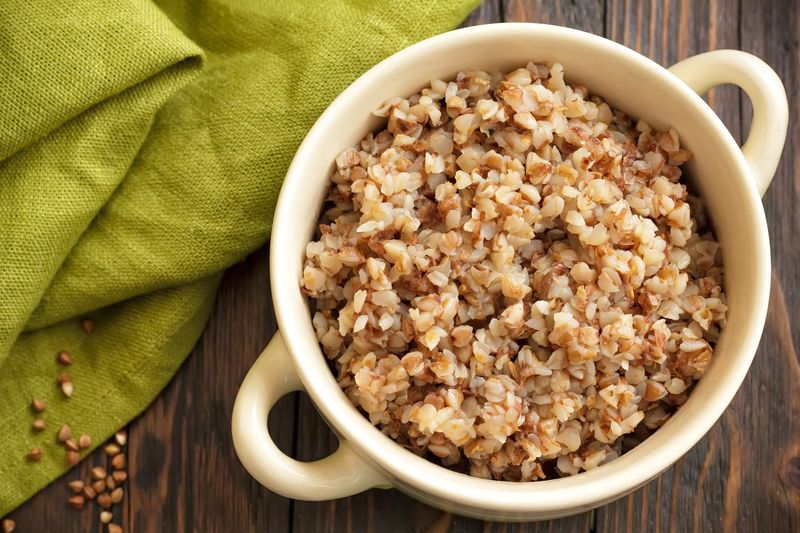
Cooked buckwheat provides about 86 mg of magnesium per cup, despite not being related to wheat at all. This triangular seed (technically a pseudocereal) has a distinctive earthy flavor and is naturally gluten-free, making it suitable for those with celiac disease or gluten sensitivity.
Roasted buckwheat groats, known as kasha, have a stronger, nuttier taste than raw buckwheat. They cook in about 15-20 minutes, similar to rice. In Japan, buckwheat is used to make soba noodles, while in Russia and Eastern Europe, it’s a traditional porridge ingredient.
Try buckwheat as a breakfast porridge topped with fruit and nuts. Use it in grain salads mixed with herbs and vegetables. Buckwheat flour makes excellent pancakes with a unique flavor profile. Store uncooked buckwheat in an airtight container in a cool, dry place.
21. Peanut Butter: Childhood Favorite with Benefits
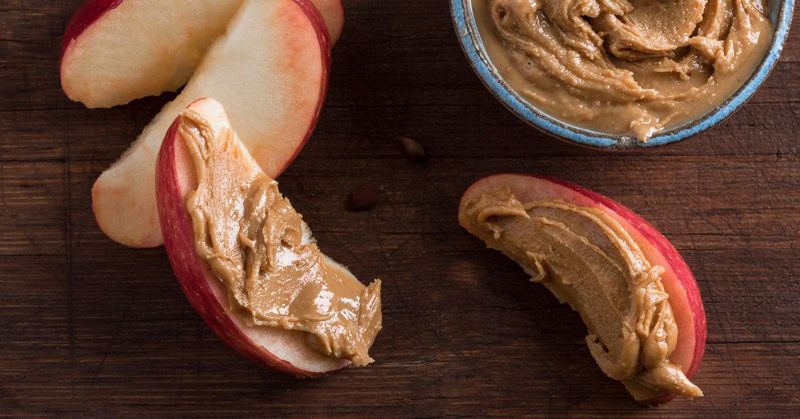
Two tablespoons of natural peanut butter contain about 49 mg of magnesium, making this popular spread more than just a nostalgic treat. The natural oils in peanut butter provide healthy monounsaturated fats that support heart health.
Choose natural peanut butter with just peanuts and maybe salt listed in the ingredients. The oil separation is normal – just stir it in before using. Avoid brands with added sugars, oils, and stabilizers that reduce the nutritional value. Store natural peanut butter upside down in the refrigerator to help prevent oil separation.
Beyond the classic PB&J, try peanut butter in oatmeal or smoothies for creaminess and staying power. It makes an excellent base for savory sauces – mix with soy sauce, lime juice, and a touch of honey for a quick Thai-inspired noodle sauce. Use it in energy balls with oats and dried fruit for portable snacks.
Leave a comment